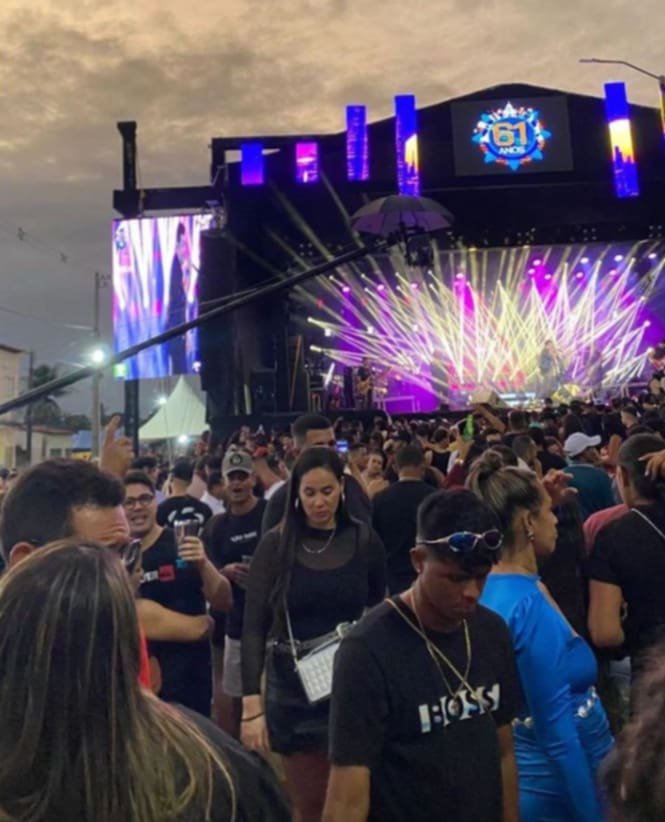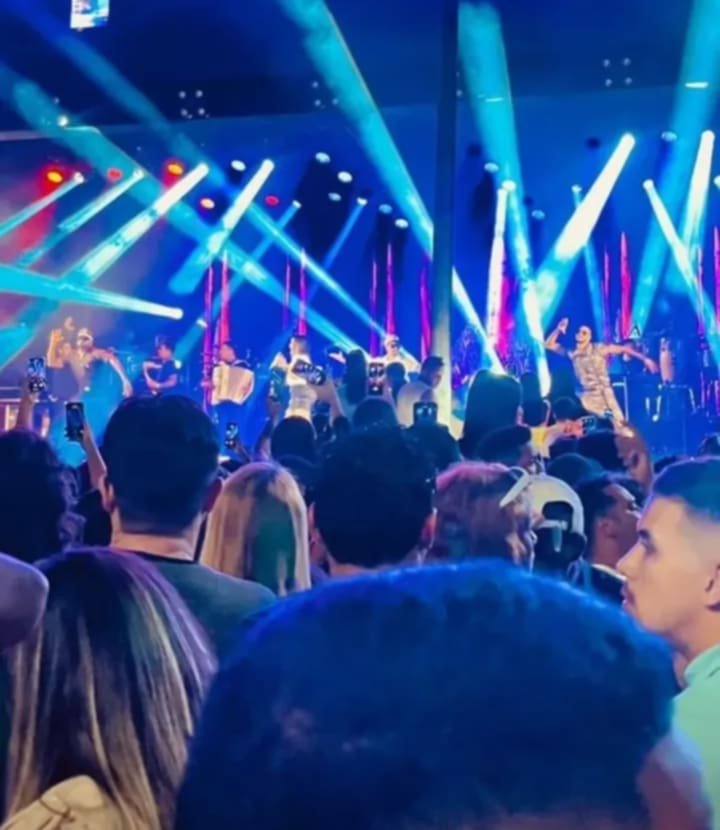
[PT]
Sendo uma cultura genuinamente nordestina, o forró é um elemento cultural que retrata a identidade, valorização, preservação e história do povo nordestino. Sua manifestação cultural anima o local ao qual está presente, através do ritmo, estilo de dança com dois ou mais participantes e a festividade em si, que também se chama forró.
O folclorista Câmara Cascudo acredita que o termo forró surgiu da expressão "forrobodó", dança realizada no século XIX. Como não havia pisos cimentados, o piso do local da dança era molhado e as pessoas dançavam arrastando os pés para não levantar poeira, surgindo o estilo do arrasta-pé. O estilo sofreu influência de ritmos portugueses, mas garantiu sua identidade cultural. Existe uma teoria que o forró tenha sido criado de uma expressão inglesa, mas sem comprovação histórica.
O forró não era muito conhecido no Brasil, começou a ganhar espaço no território nacional nas décadas de 1960 e 1970, período em que o povo nordestino migrou para outras regiões, a procura por trabalho e melhora na condição de vida foi um dos fatores que ajudou a propagar esse ritmo musical.
Compositores e cantores famosos, como Luiz Gonzaga e Zé Dantas, contribuíram para que esse ritmo fosse apreciado em todas as regiões do país. Suas composições fazem sucesso até nos dias de hoje.

Apesar de manter os traços culturais do passado, utilizando a sanfona, o triângulo e a zabumba, o gênero musical do forró começou a fugiu do estilo tradicional e adicionou alguns instrumentos modernos, como a bateria, o teclado, o sax, a guitarra e o baixo elétrico, removendo o zabumba com o passar do tempo. Tais mudanças aconteceram nas décadas de 80 e 90. O forró passou a ter definições específicas como forró tradicional e forró eletrônico.
Com o passar do tempo, após o ano 2000, surgiu o forró universitário e a cultura nordestina passou a ser um produto superficial, são poucas as bandas e grupos musicais que retratam o forró puro. O estilo de dançar forró também mudou, inicialmente era dançado na forma de abraço fechado entre dois indivíduos, hoje, a forma como a expressão gestual da dança é mostrada depende de seu estilo e lugar.
NOTA: 13 de dezembro é o dia do forró, data do nascimento do compositor, cantor e sanfoneiro Luiz Gonzaga.

Todo o conteúdo, imagens e edições foram produzidos por @josiva para a comunidade @HiveBR.
[EN]
As a genuinely northeastern culture, forró is a cultural element that portrays the identity, appreciation, preservation and history of the people of the Northeast. Its cultural manifestation enlivens the place where it is present, through the rhythm, dance style with two or more participants and the festival itself, which is also called forró.
Folklorist Câmara Cascudo believes that the term forró came from the expression "forrobodó", a dance performed in the 19th century. Since there were no cement floors, the floor of the dance venue was wet and people danced dragging their feet to avoid raising dust, giving rise to the style of "arrasta-pé". The style was influenced by Portuguese rhythms, but it guaranteed its cultural identity. There is a theory that forró was created from an English expression, but there is no historical proof.
Forró was not very well-known in Brazil, but it began to gain ground in the country in the 1960s and 1970s, a period in which the people of the Northeast migrated to other regions. The search for work and better living conditions was one of the factors that helped to spread this musical rhythm.
Famous composers and singers, such as Luiz Gonzaga and Zé Dantas, contributed to this rhythm being appreciated in all regions of the country. Their compositions are still successful today.

Despite maintaining the cultural traits of the past, using the accordion, the triangle and the zabumba, the musical genre of forró began to move away from the traditional style and added some modern instruments, such as the drums, the keyboard, the sax, the guitar and the electric bass, removing the zabumba over time. These changes occurred in the 1980s and 1990s. Forró began to have specific definitions such as traditional forró and electronic forró.
Over time, after the year 2000, forró universitário emerged and the Northeastern culture became a superficial product; there are few bands and musical groups that portray pure forró. The style of dancing forró has also changed. Initially, it was danced in the form of a closed embrace between two individuals. Today, the way in which the gestural expression of the dance is shown depends on its style and place.
NOTE: December 13 is Forró Day, the birthday of composer, singer and accordionist Luiz Gonzaga.

All content, images, and edits were produced by @josiva for the @HiveBR community.
Posted Using InLeo Alpha


